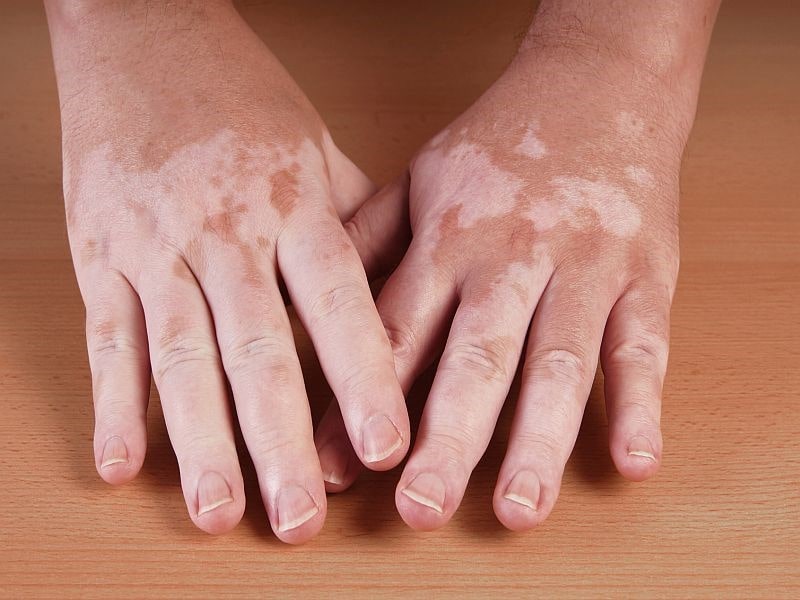
The Vitiligo disease and loss of Skin Color
Vitiligo is a condition in which white patches develop on the skin and can affect any part of it. Most of the people who suffer from vitiligo have white patches on many areas of their body. Affected skin by this disease does not have its characteristic color due to the loss of its melanin and for some reasons, the pigment-forming cells known as melanocytes have been destroyed. This complication can be classified as self-immune disease, through which the immune system invades body’s cells instead of attacking germs. Although it can affect all races equally, it’s more noticeable among dark-skinned people.

Who Is Likely to be affected by vitiligo?
No matter that the individual is female or male, vitiligo affects both sexes equally.
- Most of the prone people experience this disease in the early years of their life, at the age of 10 to 30 and in general before turning 40.
- It may run in any families. When someone in the family is diagnosed with this disease, it is more likely for other members of family to get it as well. Meanwhile, when individuals in a family start to get gray hair prematurely, they are more likely to be affected by this disease.
Self-immune diseases such as thyroid or type 1 diabetes will increase the chance of developing this condition.
What are the vitiligo’s symptoms?
During this disease, the number of pigments reduces in several different parts of the body. The patient may experience specific periods of loss and stability of pigment. When vitiligo occurs, white patches appear and remain for a while but they might get bigger later.
It commonly affects the folded parts of the body (such as armpits) or those parts which have been injured in the past, as well as parts which are exposed to sun, surrounding parts of moles, fingers, hair, body cavities and eyelids.

What are the treatment methods for curing the vitiligo?
Doctors usually can diagnose vitiligo and suggest different treatment methods by examining the skin during a physical examination. Not all of the treatment methods are suitable for everyone. Many of the treatment methods can have unwanted side effects or make the treatment duration long, and some can even be ineffective. The current methods and options for treating this disease include medical, surgical and other therapies. Most of the treatments aim to restore color to white patches.
Vitiligo medical treatments includes :
- Medications (such as creams) that are applied to the skin
- Medicines that are taken orally
- Improving the appearance of the affected skin by cosmetics or corticosteroid creams
- Re-pigmenting the white skin using UV light
- Lighten the non-affected skin areas, so that it can adjust to nearby white spots.
Surgical treatments include:
Skin transplantation from individual’s own skin texture. The doctor takes the skin from one area of the body and connects it to another area. This method is used for people with small vitiligo.
Tattoo small areas of skin
Summary: During the vitiligo disease, pigment cells of skin are being destroyed and whit patches start to develop on skin. Different treating methods may have different results. Doctor may first advise to use cosmetic products. In the case of choosing medication or surgery as your desired treatment method this procedure may take a few months and new spots may develop on your skin again.











Reviews
Number of pending reviews15146